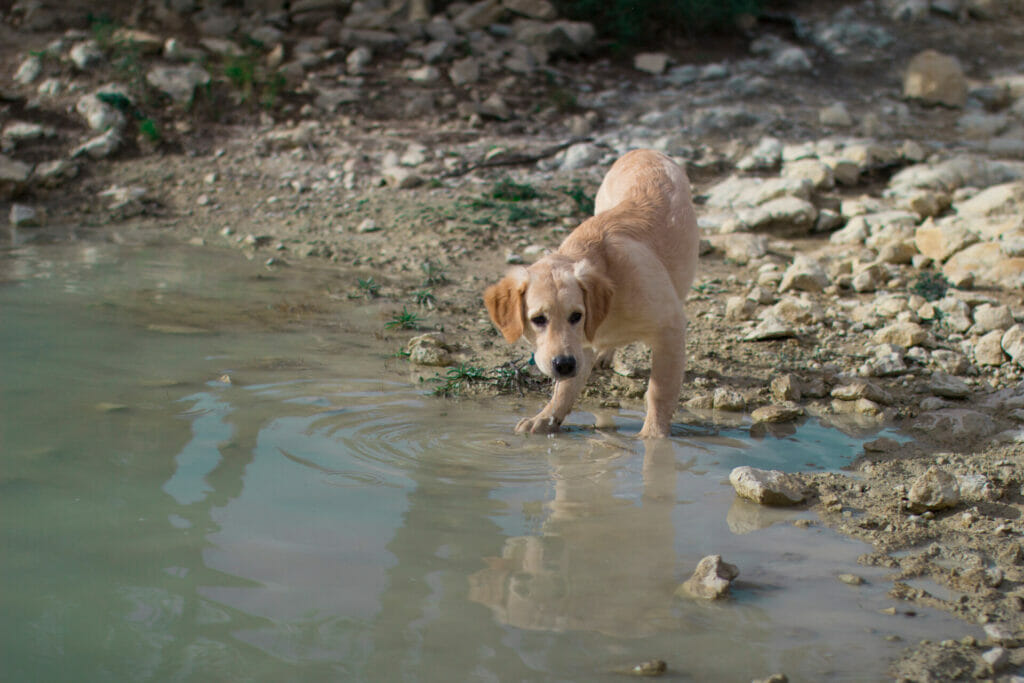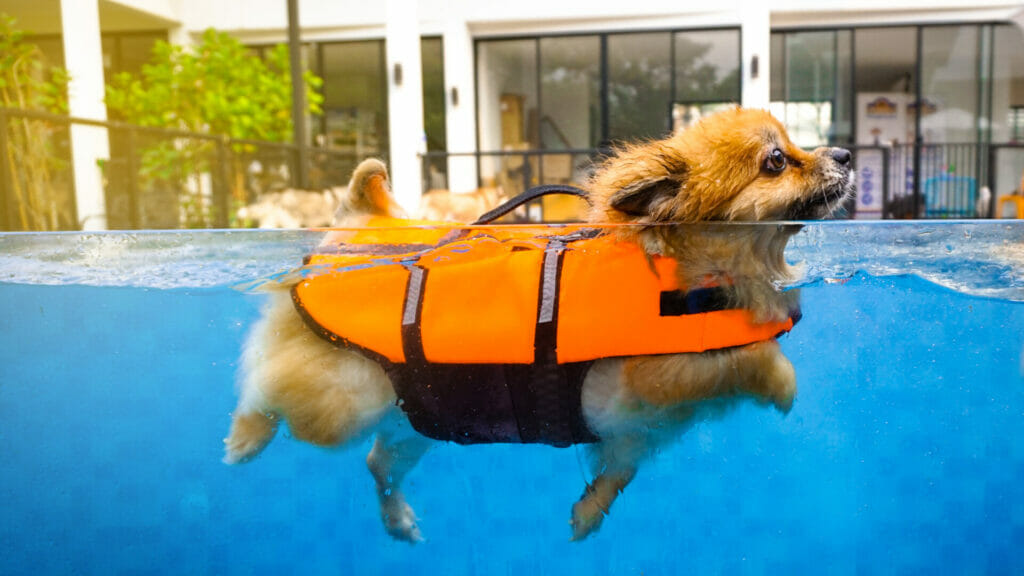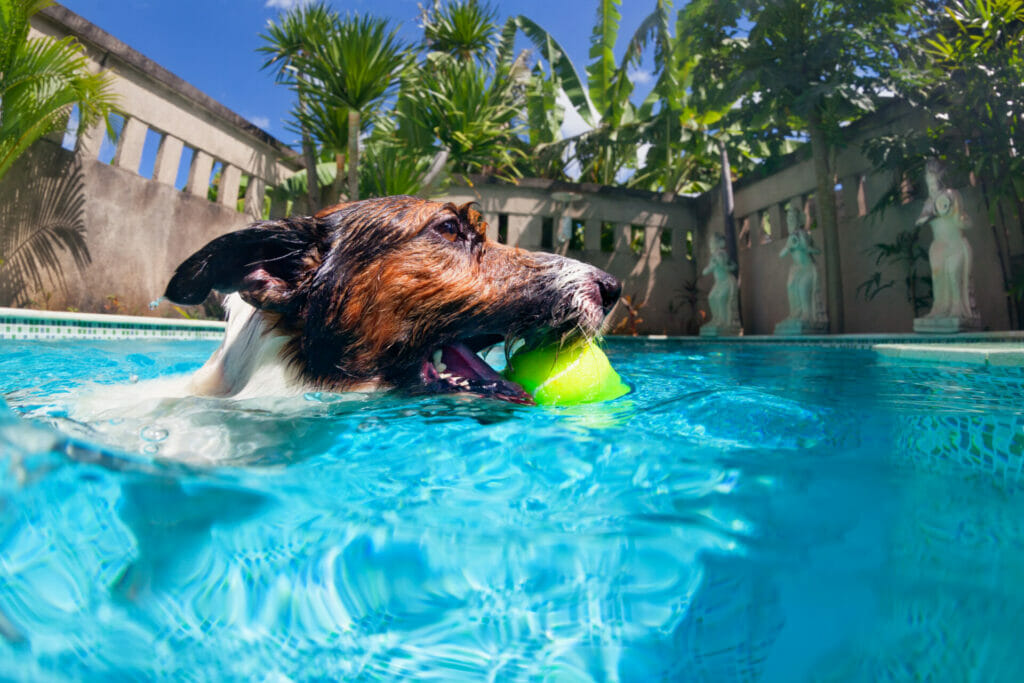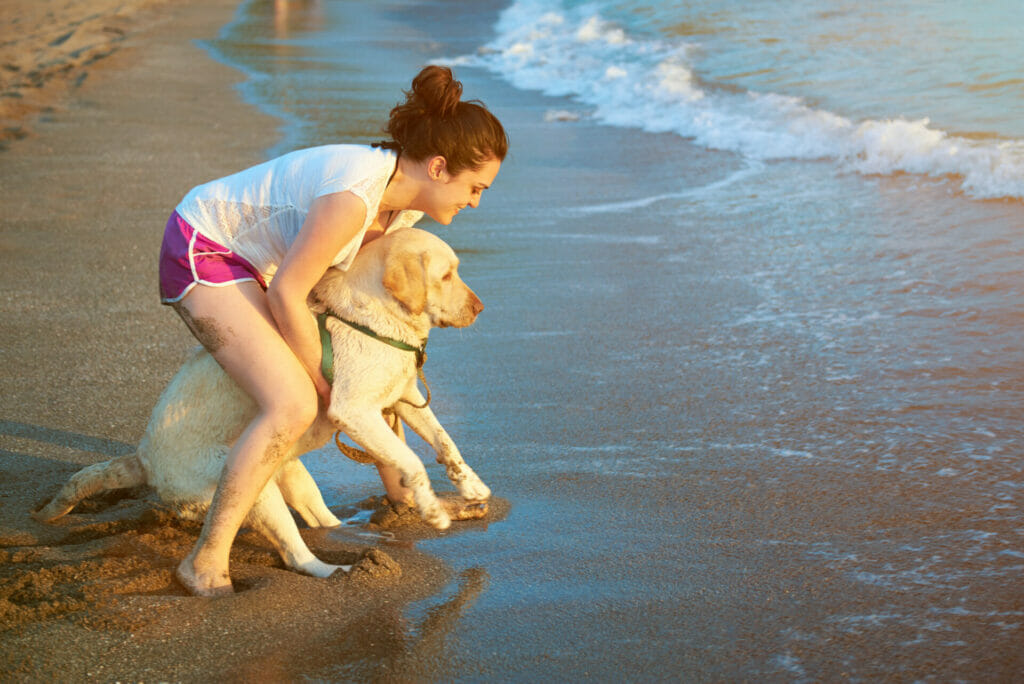Is your dog scared of water? While some dogs take naturally to swimming, this isn’t a universal experience for all dogs. Thankfully with some intentional planning, your dog can learn to like being in and around water. Teaching your dog to enjoy water means developing a positive relationship with water through careful introductions and and rewards
Picking the Right Water
To help your dog develop a positive association with water, be thoughtful about which bodies of water your dog is introduced to. If you have a yard, a baby pool filled with just a few inches of water is a good intro. A baby pool allows your dog to explore water without much risk. It’s less likely your dog is overwhelmed by deep water, sea creatures, waves, etc.
Once comfortable with a baby pool (or if you don’t have that option), find calm water with a gradual entrance. Slow-moving rivers, dog fitness center pools, and lakes make good options for a dog’s intro to water. For many dogs, large crashing waves are frightening so be cautious about a first exposure to the ocean. If the beach is the most accessible, pick a time with calm waves. When finding natural water check local news for health advisories. Be especially careful about blue-green algae which can be fatal to dogs.

Safety First
It’s a good idea to make sure your dog is wearing a properly fitted life jacket designed for dogs. A lifejacket prevents your dog from drowning. Life jackets also help dogs build confidence in the water and provide buoyancy and support as dogs learn to swim.
For puppies or senior dogs with weaker joints, life jackets are a must. In addition, any brachycephalic breed like Pugs and French Bulldogs should always wear life jackets. These flat-faced dogs have difficulty breathing, so swimming can be too tiring.

Make Water a Game
Build positive associations with rewards like (waterproof) dog toys and high-value treats. Help your dog build confidence in and around water by playing a game. Let your dog explore the water at their own pace and praise and reward any engagement with the water. Your dog will quickly make the association that not only water is fun, but when they engage with the water, they get rewarded. They’ll slowly become less scared of water.
For more timid dogs, start rewarding when your dog looks at the water, steps near the water, or sniffs it. For dogs who are bolder or more curious about the water, reward them for stepping in, wading, or even splashing.
Go At Your Dog’s Pace
Do not force your dog into the water, especially if they’re scared of water. Although many dogs can swim naturally, being thrown into the deep end is traumatic. Forcing your dog into the water decreases the likelihood that your dog loves the water. Essentially, they associate water with something scary. When your dog is comfortable in the shallow water use treats and toys to encourage interaction in deeper areas. Model the behavior for your dog and show them that it’s safe and fun in the water! If your dog seems stressed by the water, take a step back and let your dog decompress on dry land. Follow your dog’s lead when they express interest or curiosity about the water next time.
Supervision Around Water
Regardless of how strong a swimmer your dog is, anytime your dog is near water or has access to water they should be supervised. This includes when dogs are actively swimming or wading in the water, as well as when they are just near the water. Even experienced swimmers can get overwhelmed, injured, or unexpectedly tired while swimming. Try leashing your dog to you anytime you are near water and not fully able to supervise.
Encourage Natural Swimmers
Some dogs are a breed (or a mix of breeds) that were first developed to swim. Swimming breeds include Labradors, Golden Retrievers, Newfoundlands, Portuguese Water Dogs, and Nova Social Duck Tolling Retrievers. These dogs will take to water naturally right away. Often from a very young age, these dogs are drawn to water and are comfortable engaging with water. Many of these dogs take to swimming just as naturally as they learned to walk. Even for dogs with a natural affinity to water, it’s important to be thoughtful about their initial introduction to the water.
For dogs love swimming, see if there’s a canine swim facility nearby. If so, consider signing your dog up for Dock Diving classes. Dock Diving is a fun high-energy sport where dogs leap off a dock into the water to retrieve a toy. In Dock Diving, dogs are judged by the distance they jump.
Getting Support: Dogs Who Are Scared of Water
Some dogs take to water more slowly than others. If your dog is scared fo water, there’s no shame in asking for help! Canine swim centers are becoming increasingly popular in communities around the country. This is in large part to the advancements in canine physical therapy, and the popularity of dog sports. Local K9 centers may have trained canine swim coaches to help you introduce or reintroduce your dog to the water safely.

All dogs aren’t born to swim but with patience and careful introductions, most dogs can learn to be comfortable around water. Dogs who don’t enjoy full swimming may enjoy playing near the water. When introducing your dog to water, be sure to go at their pace. Celebrate and reward any positive engagement or interest your dog has with the water to continue building confidence!




















